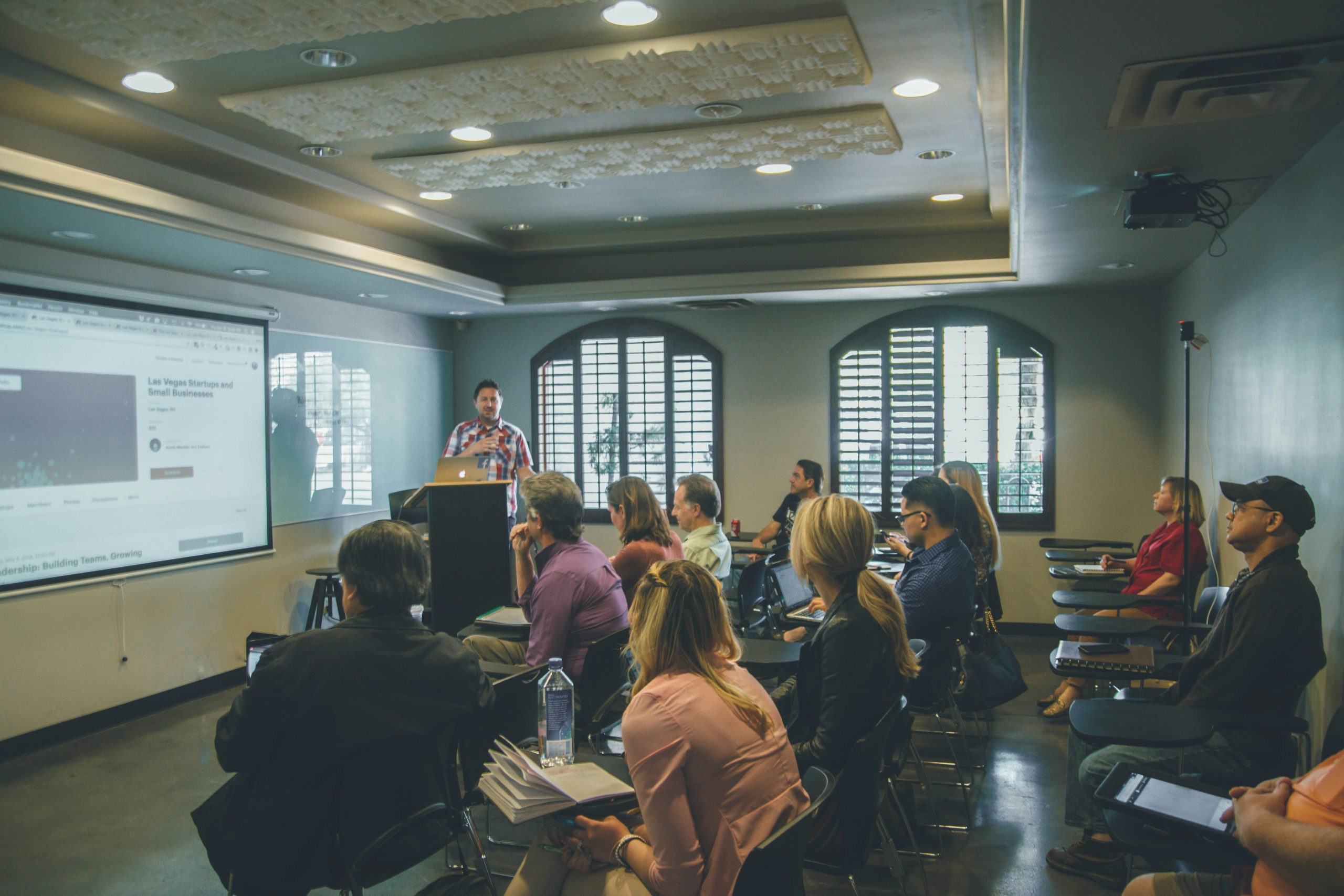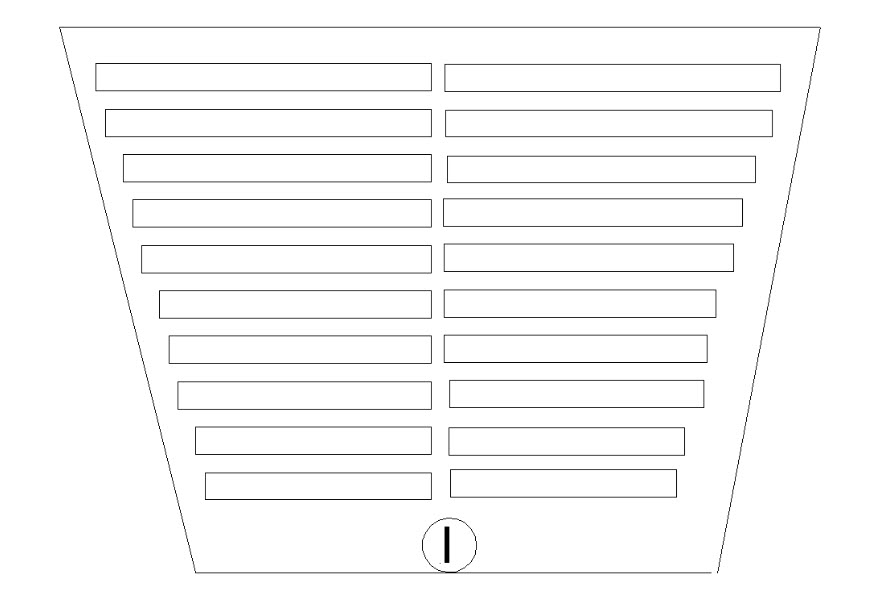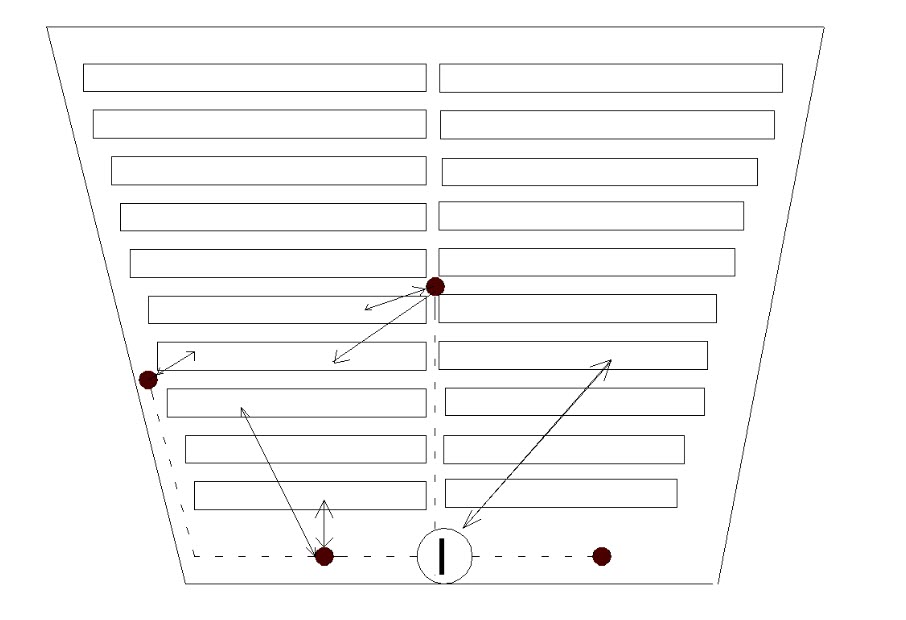5 The Classroom Observation
Donald Johnson

The actual classroom observation is the very heart and soul of the peer observation of teaching process! During the classroom observation the peer observer, informed by both the pre-observation meeting and their own professional experiences, observes and objectively records behaviors related to faculty-student rapport, classroom climate, lesson pacing and flow, student engagement, faculty – student and student to student interactions, apparent student understanding of content, time management, use of instructional resources (technology, printed materials, etc.), and other factors relevant to teaching and learning. Additionally, the peer observer places special emphasis on behaviors related to any area(s) where the instructor asked for specific feedback during the pre-observation conference. These specific observations will form the basis for both the post-observation meeting and the written peer observation of teaching report.
Preparing to Observe
If possible, the observer should be in the classroom at least 10 minutes before the class begins and take a seat in the rear center of the classroom. This location generally allows the best view of the instructor and students while making the observer as unobtrusive as possible. The observer should use this time to observe student-instructor interactions as students arrive (more on this later) and to prepare two handwritten observation forms: a classroom observation form and a classroom interaction map.
We recommend a simple three-column classroom observation form as shown in Figure 1. The left column is for recording the time, the middle column is for recording the actual observed behavior, and the right column is for any interpretation of what you have observed. We will provide example entries in later sections.
| Time | Observation | Interpretation |
|---|---|---|
Doing the Classroom Observation
After reading the list of observable classroom behaviors previously described, classroom observation may at first appear to be an almost impossible task. You may wonder, “How can I possibly observe and record all of these (plus other!) things?” To make this a more manageable task, we recommend breaking the classroom observation into smaller components such as: (a) before class, (b) start of class, (c) core instructional period, (d) end of class and (e) after class. During each component you can focus on specific observable behaviors and develop a course timeline.
Before Class
During this time, in addition to preparing your observation form and classroom observation map, observe the instructor and students as they gather and prepare for class. Specifically, look for faculty-student and student-student interactions as possible indicators of rapport and classroom climate. Your observations may be guided by these and similar questions:
Is there interaction between the instructor and students? If so, how would you characterize these interactions?
Is there interaction among the students? If so, how would you characterize these interactions?
What is the overall “feel” of the classroom? Can you discern a link between this “feel” and the instructor’s behaviors?
An example classroom observation form completed during the time before class might look like the following. Note that the observations are limited to observable instructor and student behaviors, are keyed to specific timeline, and that interpretation is tentative at this point. These tentative interpretations will be further checked as the class progresses.
| Time | Observation | Interpretation |
|---|---|---|
| 7:49 | Arrived at class and sat in rear center. Instructor (I) was preparing computer and projector. No students present. | Evidence of organization/planning? |
| 7:52 | Students begin to arrive – I greets each student (calls most by name) – students respond in friendly manner. | Evidence of positive rapport? |
| 7:55 | Approximately 35 (of 40) students present. I briefly greets each student – students respond positively. | Is this typical attendance? Same students absent regularly? |
| 7:55-8:00 | Most students talk quietly in small groups or pairs. 3 additional students arrive. | Positive classroom climate? |
Beginning of class
The beginning of a class session (approximately 2 – 5 minutes) often sets the tone for the remainder of the class. During this time the instructor must gain student attention and focus, possibly review previously studied materials, overview the day’s lesson, and, hopefully, motivate the students to learn. Thus, these first few minutes may provide the observer with important information on time management, instructor organization and clarity, faculty-student rapport, classroom climate, and student motivation and engagement. The following questions may help guide your observations during the beginning of class.
- Does class begin on time?
- How does the instructor begin the class? Do students immediately focus on class activities or is there continuing off-topic conversation?
- Do students arrive late? If so, does the instructor allow this to become a distraction?
- Does the instructor review the previous lesson (or lessons)? If so, do students appear to recall and understand previous lessons?
- Does the instructor provide an overview of today’s lesson?
- Does the instructor attempt to explain how today’s lesson fits into previous or subsequent lessons? If so, do students appear to understand?
- Does the instructor attempt to build student interest or provide a “reason to learn” the lesson content? Based on student reactions, was this effective?
An example classroom observation from an effective class beginning might look like the following. Note the underlined question under interpretation that might serve as a point for discussion during the post-observation conference.
| Time | Observation | Interpretation |
|---|---|---|
| 8:00 | I begins class promptly with a smile and enthusiastic “Good morning. everyone! I’m glad you are here today!” (Slight pause as student talk ends and attention focuses.) | Positive class climate and Instructor/student rapport. |
| 8:01-8:03 | I overviews the day’s lesson and briefly relates to previous lesson. (Objectives displayed on screen – about ½ take pics or write down) | Clear/logical organization. |
| 8:03-8:05 | I, “Why would you ever need to know this?” Waits for responses. Student – “So we can pass the test?” (laughter by students and I). I, “That’s certainly important! Any other reasons? Student – “So we can . . . “ I – “Exactly! So, now that we know why this is important, let’s dig in!” | Do all student understand the importance of objectives?
Good questioning and wait time. Effective student engagement/motivation. Good transition and flow |
Core Instructional Period
The core instructional period is the primary teaching and learning segment of a class, ideally characterized by focused teaching, student participation, and the application of course content. In a typical 50-minute class, core instruction is generally about 40 minutes in length. This portion of the class provides numerous opportunities to observe instructor and student behaviors, interaction patterns, classroom climate, faculty-student rapport, and indirect indicators of student engagement and learning. The following questions may be helpful in guiding your observations during core instruction.
- What instructional methods are used? How do students respond to these methods?
- Does the instructor use a variety of methods and activities? How do students react to these methods and activities?
- Does the instructor use appropriate examples or personal experiences to enrich course content or to aid in student understanding?
- Does the instructor monitor student engagement and adjust instructional activities accordingly?
- Is there an obvious and logical flow between topics? Do students appear to understand this flow?
- Does the instructor use interim summaries and transitions between lesson topics?
- Do students appear to know what they are supposed to do throughout the lesson, or do they seem confused at times?
- Do students appear to understand the lesson content as indicated by facial expressions, body language, and questions?
- Does the pace of the class seem appropriate based on student behaviors? Do students seem hurried from moving too fast, or do they appear bored from moving too slow?
- Do students appear to be engaged with the lesson content? Are they attentive or do they look bored? Do they make eye contact with the instructor and with each other? Do they ask and/or respond to questions? Are they taking notes? Do they engage in individual and/or group work when presented with the opportunity? Do they exhibit off-task behaviors?
- Are opportunities provided for students to practice or apply content?
A somewhat abbreviated classroom narrative from the core instructional period might look like the following.
| Time | Observation | Interpretation |
|---|---|---|
| 8:05 – 8:18 | Presents PP mini-lecture – enthusiastic – good visuals and tech use – some limited Q/A/discussion with students – I to student (S) and S to I, no S to S discussion. | Effective class preparation. Would more Q/A/discussion be useful? Would quest. like, “What do you think about what Joe said?” enhance discussion? |
|
8:18 – 8:22 |
Student attention drifts as evidenced by posture, lack of eye contact, and decreased note taking. Approx. 1/3 of students. I appear to notice. | Effective at “reading” students and adjusting |
| 8:22 – 8:25 | Think-pair share activity with “report out.” Good participation – engagement/interest increased. On-target responses | Clear instructions. Evidence of student learning. |
| 8:25 – 8: 34 | Summary discussion and transition to next topic | Good reinforcement and clear transition |
| 8:34 – 8:40 | PP mini lecture on [Topic 2]. Quality slides. Students engaged – eye contact/posture, notetaking. | Effective preparation – engaging presentation |
| 8:40 – 8:48 | Small group (3-4 student) activity. Activity outlined on slide. Students begin work immediately – appeared to understand the assignment, and how to complete it. Instructor circulates and checks in briefly with 7 of the 10 groups. Eight groups finished completed task – two did not. No additional discussion or report-out on activity. | Instructional variety. Related activity. Clear instructions. Opportunity to apply learning. Evidence of learning. Student engagement.
Faculty-student rapport/Class climate. Would report out or discussion be beneficial to learning? |
Faculty Perspective
“Don’t try to follow the subject matter. Focus on the interactions between the teacher and the students. Write down everything you see, hear, think during the observation, even if it seems miniscule at the time.”
End of Class
The end of class (typically the last 3 – 5 minutes) is the closure phase of a class period and provides the opportunity to summarize the lesson, place new learning in context, provide a brief reminder of upcoming course activities and assignments, answer student questions, and overview the next class meeting. During the end of class, the following key questions can help guide your observations.
- Does the instructor summarize the lesson?
- Does the instructor invite and respond to student questions?
- Does the instructor put the lesson in context with prior learning?
- Does the instructor remind students of upcoming assignments, activities, and due dates?
- Does the instructor overview upcoming lessons or topics?
- Is there sufficient time reserved for effective end of class activities or are these activities rushed or omitted?
A typical set of classroom observation notes from the end of a class might look like the following.
| Time | Observation | Interpretation |
|---|---|---|
| 8:48 | I begins to summarize the class, “Today we have learned . . . . ” Students are somewhat attentive but also begin to pack up books and computers.
I asks if anyone has any questions about today’s lesson. No questions. |
Time management – How can you ensure adequate time in the future? |
| 8:50 | Instructor ends class with, “OK, I’ll see you Wednesday.” | Course Routine – Would it be helpful to establish an “end of class” routine? |
|
As students leave, I says, “Don’t forget, we have an exam one week from today!” Some students appear to hear others do not.
|
Announcements – Would a projected slide before dismissal be more effective in communicating announcements? |
After Class
The five minutes or so after class are an excellent time to observe informal instructor and student interactions, get additional insight into faculty-student rapport, and learn what questions students may have about the lesson, assignments, grades, or other course details. The after-class observations may look like those shown below.
| Time | Observation | Interpretation |
|---|---|---|
| 8:50-8:55 | I shuts down computer/projector and gathers materials. Speaks informally with students as the leave. “Have a good day, Genivive,” “see you Wednesday, Tom” etc. | Evidence of faculty-student rapport/positive classroom climate |
| Three students stop with questions – 2 about today’s class and one with a question about the exam. I is friendly but professional in responding. Students thank I and leave. | Students see I as being approachable |
Optional Classroom Interaction Map
In addition to the classroom narrative, you may also wish to create a classroom interaction map to record instructor to student, student to instructor, and student to student interactions. This is especially helpful if the instructor has asked for feedback on student questioning, discussion, or engagement. Figure 7 is an example interaction map drawn for observation of an instructor teaching in a large lecture hall. In the map, the circled “I” represents the instructor, and the rectangles represent rows for students arranged with center and side aisles. During class the observer annotates the map each time the instructor moves to a new location (denoted by a small circle), asks a question or makes a statement to a specific student (arrow from instructor to student), responds to a question or statement from a student (arrow from student to instructor), or when students interact with each other (arrows between students).

During class the observer annotates the map each time the instructor moves to a new location, interacts with a student, or when students interact with each other. The annotated classroom interaction map (Fig. 8) shows the instructor moved to four locations during class, interacted with six students, and focused most of their interactions on students in the front left of the classroom. There was no recorded student-to-student interaction. A map like provides valuable information for instructors desiring feedback on student interaction, motivation, and engagement.

Summary
Careful observation and detailed notes, along with the classroom interaction map, where appropriate, provide a rich and nuanced view of what happens in college classrooms. These documents provide an excellent basis for subsequent peer-to-peer discussions about teaching practices and their effects on student learning and engagement. In addition, the documents provide rich examples and implications that serve as the basis for meaningful written peer observation reports.
Media Attributions
- kenny-eliason-1-aA2Fadydc-unsplash © Kenny Eliason is licensed under a CC0 (Creative Commons Zero) license
- Lecture Hall Map © Don Johnson is licensed under a CC BY-NC (Attribution NonCommercial) license
- Figure 8 © Don Johnson is licensed under a CC BY-NC (Attribution NonCommercial) license

